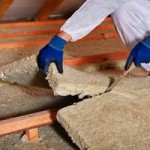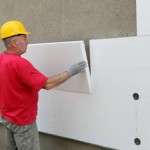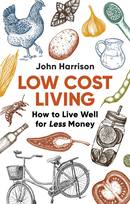With the large housing stock in the UK the chances are you live in an older, inefficient home. That will be expensive to heat and bad for carbon emissions. The problem for individuals with many demands on their money is, which insulation is cost-effective and worth doing.
 The government, in its drive to save money, is reducing financial help for carbon saving technologies such as insulation and solar power generation. Despite the fact that our homes account for just over a fifth of greenhouse gas emissions which could be easily reduced by a large amount. Instead of paying out to subsidise the green industries, they pay out on flood defences and mitigating the effects of climate change.
The government, in its drive to save money, is reducing financial help for carbon saving technologies such as insulation and solar power generation. Despite the fact that our homes account for just over a fifth of greenhouse gas emissions which could be easily reduced by a large amount. Instead of paying out to subsidise the green industries, they pay out on flood defences and mitigating the effects of climate change.
The following are roughly in order of cost effectiveness.
Draught Proofing
The first thing you should always do is to reduce drafts. Draught proofing is the most cost-effective thing you can do to reduce heating costs. Just imagine £5.00 notes slipping through the cracks and you will be motivated. Draught proofing strip applied to doors and windows costs but a few pounds and is easily available from DIY sheds.
Fitting it is easy and quick. I’ve draught proofed a door in a matter of 5 minutes. To cover the gap under a door, you buy a brush strip which is flexible so you don’t have to worry about carpets etc.
Don’t forget the letter box and if you have a cat flap, make sure that it is a decent model that seals well.
The only other thing is to check your sink / washer / tumble dryer and toilet outlets through the walls to make sure there are no gaps. Check the outside frame of windows is sealed to the wall. Tubes of silicone, applied with a gun like toothpaste are easy to use, inexpensive and effective.
Loft Insulation
Loft insulation is about the most cost-effective insulation to install, because of the simple fact that heat rises. 25% to 35% of your heat is lost through the loft to outside. Many older properties have some loft insulation but not enough. It’s well worth adding more. A more in depth look at loft insulation below:
Loft Insulation - Comparing Loft Insulation Materials and Methods
Wall Insulation
After the loft the next thing to consider insulating are the walls. Roughly 25% of heat is lost through the walls of the house. The problem here is that the older properties with solid walls are the most difficult and expensive to insulate. A more in depth look at wall insulation below:
Windows and Passive Solar
The amount of heat lost through windows isn’t as great as you might think but draughty old windows make a big difference to your comfort. Some novel ideas you can consider in the in-depth article below
Wall Insulation - Different Methods of Wall Insulating
Prevent Heat Loss in Floors
Floors lose heat as well, about 15% of your heat loss, especially in older houses with wooden floors.
If you are installing new floors, perhaps replacing a rotten wooden floor with a concrete floor or curing a damp problem, then it makes sense to incorporate an insulation layer.
Insulating on top of an existing good concrete floor is possible but remember door heights will need adjusting. You will also need to re-fit or replace skirting boards and possibly move radiators and electric sockets.
As you can quickly calculate, generally retro-fitting insulation to a good floor is not worth the expense and effect on the rest of the property.
Probably the most practical solution is to fit wall to wall carpets with a good thermal underlay. Shop around, prices vary greatly. A decent thermal underlay will range between £1.50 and £3.00 per square metre. Check out Envirolay which is a heavy felt underlay.
Envirolay allows air circulation and carpets to breathe. Moisture will not be trapped under the carpet and the build up of mildew is eliminated. Manufactured from recycled, raw materials and therefore is an environmentally friendly product.
Although plain sanded and polished floorboards are to some the most attractive and ‘natural’, any gaps between the boards are going to let in draughts. If your intention is to do this, caulking the gaps with appropriate colouring may be the answer.
Another modern trend and ideal for insulation are the wall to wall laminate flooring strips. Before laying the sections, a thick undercover is laid and this will be not only more comfortable to walk on, but provides insulation as well.
Articles on Energy Saving, Green Energy and Alternative Energy
- 6 Frugal Ways to Keep Warm this Winter
- Energy Saving Tips for Your Home
- Energy Switching and the Price Cap – How Households can Save
- How to Save Money by Using Solar Energy
- Insulating Rented Homes – Reduce Your Energy Bills
- Insulation – Save Energy! An Overview of Insulating Your Home
- Reducing your energy bills in 2023
- Saving Money by Being Green – or Wasting Money?
- Simple ways to make your home more energy efficient
- Some Simple Solar Projects You Can Do At Home
- Loft Insulation – Comparing Loft Insulation Materials and Methods
- Wall Insulation – Different Methods of Wall Insulating
- Windows, Reducing Heat Loss & Double Glazing
- Standby Electricity Costs – Save Energy!
- Reduce Your Electricity Bills! Ten Electricity Saving Tips
- Low Energy Light Bulbs: LED, CFL & Halogen Explained
- Saving Water & Rainwater Harvesting



